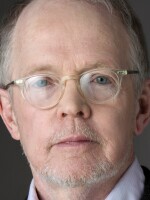A trusty Boeing 707 is inside a new home at the National Museum of the U.S. Air Force in Dayton, Ohio. The plane has graceful lines of color: white, blues and gold. In large letters: "United States of America."

Nowhere does it say Air Force One — that call sign is only used when a president is actually on board. The permanent tail number is SAM (Special Air Mission) 26000. Historian Jeff Underwood used to pronounce the tail number, like you would say the number 26,000, but he was wrong.
"I was sharply corrected by one of the crew members," Underwood says. "He told me 'no it was the SAM two six thousand'. I learned my lesson I always refer to it as SAM two six thousand."
It's often called the Kennedy airplane, the one that carried the president to Berlin in 1963. Later that year, on Nov. 22, John F. Kennedy and Jacqueline Kennedy flew to Dallas, landing at Love Field. He was assassinated in Dallas, his body flown, on this plane, back to Andrews Air Force Base.
We are on board Air Force One in the aisle, talking with the museum's Christina Douglass.
"So this is the famous photograph?"
"Yeah," Douglass answers. "As an archivist, this is what I do I look at photographs for a living."
We stand for a while — as visitors will always do — in the space where Lyndon Johnson took the oath of office. Jackie Kennedy stands next to him. And we can now — for the first time — imagine this scene in color. It has always been only newspaper black and white.
"To me this photo absolutely captures the tension, the abject sadness on Jackie Kennedy's face is right there," Douglass says. "Sort of see the reluctant determination of President Johnson."
"The Kennedy administration and the Johnson administration, they didn't like each other very much," historian Jeff Underwood says.
Underwood has talked with someone who was on the airplane and said they all did work together, especially when it was decided to remove a bulkhead and four seats so the president's casket could be carried inside the plane.
Underwood sets the scene: "They put the casket in here, on the floor, and on the flight back about where you and I are standing is where Mrs. Kennedy sat on the floor by the casket with her recently murdered husband, while just a few feet in front of us the high politics is going on, the transfer of power from the Kennedy administration to the Johnson administration."
This plane, as Air Force One, has been a moving piece of history. The Kennedy flights. Lyndon Johnson, he flew twice to Vietnam. Richard and Pat Nixon — their mission to China.
After 1972, SAM 26000 was a backup to the newer planes, and in 1998 made its final landing, in retirement, at the Air Force Museum here in Dayton.
In the past, you'd have to take a shuttle bus to go see it next door at Wright-Patterson Air Force Base. SAM 26000 now is center stage at the museum in a new $40 million hangar. The opening is on Wednesday.
Copyright 2022 NPR. To see more, visit https://www.npr.org.




